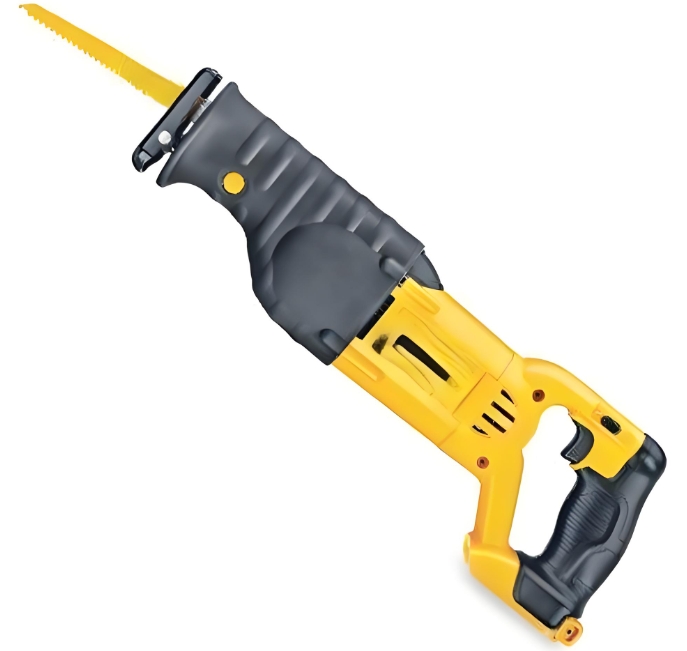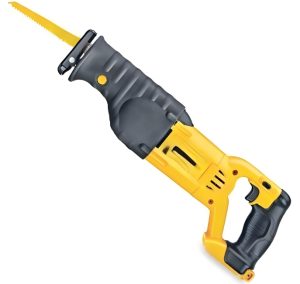Our Location
304 North Cardinal St.
Dorchester Center, MA 02124

Cordless reciprocating saws, often referred to as Sawzalls (a trademark of Milwaukee Tool), have become indispensable tools for both professional contractors and DIY enthusiasts. These versatile saws are known for their ability to cut through a wide variety of materials, including wood, metal, and plastic, making them ideal for demolition work, construction, and various home improvement projects. The cordless feature adds to their convenience, providing greater mobility and ease of use without the hassle of power cords. This guide explores the features, benefits, and considerations when purchasing a cordless reciprocating saw, and highlights some of the best models available on the market today.
The power of a cordless reciprocating saw is determined by its motor and battery capacity. Modern models often feature brushless motors, which offer higher efficiency, longer runtime, and less maintenance compared to brushed motors. Battery voltage is a critical factor as well, with common options including 18V and 20V systems. Higher voltage generally translates to more power and longer cutting times, making it easier to tackle tougher materials.
Battery life is a crucial consideration, especially for prolonged use. Many cordless reciprocating saws come with lithium-ion batteries, known for their high energy density and long life. Some models also include fast-charging capabilities, reducing downtime significantly. It’s beneficial to look for saws that come with two batteries, allowing one to charge while the other is in use.
Stroke length and speed determine how quickly and efficiently a saw can cut. Stroke length varies from around 1/2 inch to 1-1/4 inches, with longer strokes cutting faster through material. Speed is measured in strokes per minute (SPM), with many saws offering variable speed controls to adjust the SPM based on the material being cut. A typical range is between 0 and 3,000 SPM.
An easy blade change system enhances the convenience of using a reciprocating saw. Most modern models feature a tool-less blade change mechanism, allowing users to quickly switch blades without additional tools. This is particularly useful when working with different materials that require different types of blades.
Ergonomic design plays a vital role in reducing user fatigue, especially during extended use. Look for features such as rubberized grips, balanced weight distribution, and anti-vibration technology. Compact and lightweight designs are beneficial for working in tight spaces and overhead applications.
Durability is essential for any power tool, especially those used in demanding environments. High-quality materials and robust construction ensure that the saw can withstand rough handling and prolonged use. Features like metal gear housings and reinforced components contribute to the tool’s longevity.
The primary advantage of cordless reciprocating saws is the freedom from power cords, providing unmatched mobility. This allows users to work in areas without access to electrical outlets and reduces the risk of tripping over cords.
Cordless reciprocating saws are highly versatile, capable of cutting through various materials with the appropriate blade. This makes them suitable for a wide range of applications, from cutting pipes and metal sheets to trimming tree branches and dismantling structures.
With features like variable speed controls, tool-less blade changes, and ergonomic designs, these saws are user-friendly. They are suitable for both professionals and amateurs, simplifying complex cutting tasks.
Many models come equipped with safety features such as lock-off switches, which prevent accidental activation. This is particularly important when handling powerful tools.

Consider the primary tasks you will use the saw for. Heavy-duty demolition work requires a more powerful saw with a longer stroke length and higher battery capacity, while lighter tasks might be adequately handled by a more compact and lightweight model.
If you already own cordless tools from a particular brand, it might be cost-effective to choose a reciprocating saw that uses the same battery system. This compatibility allows for battery sharing, reducing the need for multiple chargers and batteries.
Cordless reciprocating saws come in a wide range of prices. While it’s tempting to opt for cheaper models, investing in a higher-quality saw can save money in the long run due to its durability and performance. However, there are also many mid-range options that offer excellent value for money.
Reputable brands like DeWalt, Milwaukee, Makita, and Bosch are known for producing reliable and durable tools. Additionally, check the warranty offered, as it provides an indication of the manufacturer’s confidence in their product and offers protection against defects.
The DeWalt DCS367B is a compact, lightweight model that delivers powerful performance. It features a brushless motor, providing efficient and long-lasting power. The saw has a 1-1/8 inch stroke length and a variable speed trigger that delivers up to 2,900 SPM. Its compact design allows for easy maneuverability in tight spaces.
Milwaukee’s 2720-20 M18 Fuel Sawzall is known for its durability and cutting power. It boasts a brushless motor and REDLITHIUM battery technology for extended runtime. With a stroke length of 1-1/8 inches and up to 3,000 SPM, it can handle the most demanding tasks. The saw also includes an adjustable shoe and an integrated LED light.
The Makita XRJ05Z offers a balanced combination of power and ergonomics. It features a brushless motor, 1-1/4 inch stroke length, and a variable speed control dial with a range of 0-3,000 SPM. The tool-less blade change system and dual LED lights enhance its convenience and usability. It’s also equipped with Extreme Protection Technology (XPT) for improved dust and water resistance.
The Bosch GSA18V-125 is designed for heavy-duty applications. It has a brushless motor and delivers up to 2,500 SPM with a 1-1/4 inch stroke length. The saw’s ergonomic design includes a comfortable handle and vibration control for reduced user fatigue. It also features an advanced heat management system to protect the battery and motor during extended use.
Ryobi’s P517 is a budget-friendly option that doesn’t compromise on performance. It features a brushless motor, 1-1/8 inch stroke length, and up to 3,200 SPM. The tool-less blade change system and pivoting shoe enhance its versatility. It’s compatible with Ryobi’s extensive line of 18V One+ batteries, making it a great choice for those already invested in the Ryobi ecosystem.
Cordless reciprocating saws offer unparalleled convenience and versatility for a wide range of cutting tasks. When choosing the right saw, consider factors such as power, battery life, ergonomics, and specific features that match your intended use. Investing in a high-quality model from a reputable brand ensures reliability and durability, providing excellent value over time. Whether you’re a professional contractor or a DIY enthusiast, a cordless reciprocating saw is a valuable addition to your toolkit, enabling you to tackle projects with ease and efficiency.